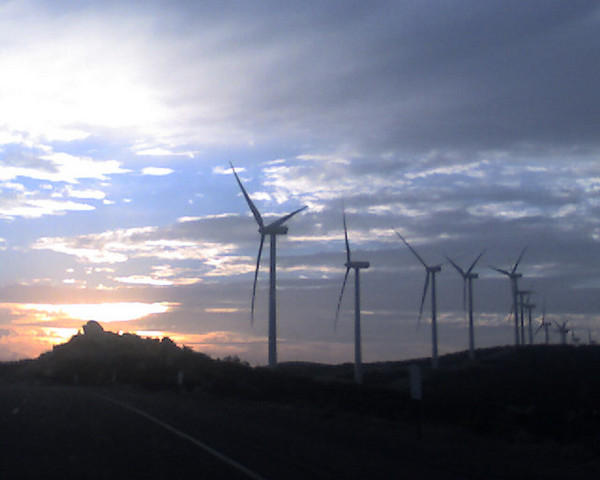
by Chris Clarke
on February 24, 2014 kcet.org
It’s official: a wind power project that would have generated up to 250 megawatts of power with as many as 85 turbines in the San Diego County backcountry is off the table.
The Shu’luuk Wind Project, proposed by the firm Invenergy for up to 4,000 acres of the Campo Indian Reservation, suffered a mortal blow last June when the tribe’s General Council voted 44-34 to oppose the project. Opposition stemmed from concerns over quality of life, the risk of fire, and perceived health impacts of the project.
Though the project’s proponents had suggested last June that they might seek another vote on the project, the tribe subsequently canceled its lease with the project’s proponent Invenergy. On Thursday, the Bureau of Indian Affairs announced that it was cancelling the project’s final Environmental Impact Statement (EIS), thus sticking the proverbial fork in Shu’luuk Wind.
Shu’luuk Wind’s Draft EIS, released in January 2013, was widely criticized for containing insufficient detail about the project’s design, including the type and output of the turbines to be built. Nonetheless, tribe members and other locals expressed strong concerns over fire danger from the project in the traditionally highly flammable San Diego backcountry, as well as increased dust problems from more than 25 miles of new dirt roads, along with concerns over noise and visual disturbance.
The cancellation of the final EIS doesn’t mean there won’t be turbines on the Campo reservation: the tribe already hosts an existing wind installation, the Kumeyaay Wind Farm, with 25 large turbines. An explosion and fire in one of that project’s turbines December 16 didn’t exactly alleviate locals’ concerns about fire danger from local wind development. That facility was offline for nearly a month after the mishap.
Also in December, the BIA approved a deal by which the nearby Ewiiaapaayp Band of Kumeyaay
Indians would lease reservation lands for a westward expansion of the large Tule Wind project, which would be mainly sited on BLM lands to the east of that band’s Cuyapaipe Reservation, and just north of the Campo Reservation.
Opinion on the Shu’luuk project was mixed within the Campo Reservation’s residents as well, so the cancellation of that project doesn’t necessarily mean the end of new wind projects on Native lands in the backcountry. But as more turbines appear in the area, opposition could intensify.
Wind turbines near Campo | Photo: Joel Price/Flickr/Creative Commons License

